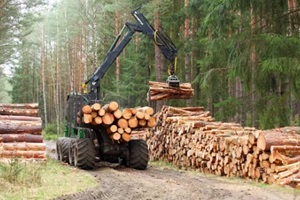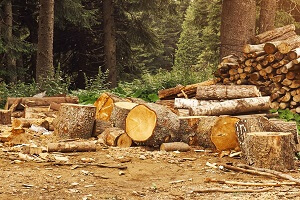 Forestry equipment owners and managers concerned with understanding and managing liability risks associated with their operations should invest in high-quality, targeted insurance policies.
Forestry equipment owners and managers concerned with understanding and managing liability risks associated with their operations should invest in high-quality, targeted insurance policies.
The forestry industry is full of risk, not just for financial losses due to equipment damage or lost lumber but also due to legal challenges from worker injury, property damage, and more.
Here are some key strategies for forestry equipment owners to navigate liability issues, emphasizing legal considerations and the forestry insurance solutions that can help.
Understanding Liability in Forestry Operations
The term “liability” refers to who is legally responsible for an event or situation. In forestry, liability matters—it dictates whether a business is on the hook for the financial costs of certain accidents or will face penalties for non-compliance with regulations.
Liability within the forestry industry primarily targets three areas: damage done to property, damage done to people, and failure to abide by regulatory requirements.
Damage to Property
This type of harm caused during forestry operations qualifies as damage to private property not owned by your business and also harm to the environment.
For instance, cutting down a tree that accidentally rolls into someone’s private cabin results in the logging company being liable for the cost of repairs.
Alternatively, if a forestry company’s feller buncher leaks fluid that pollutes the natural environment, that business could be liable for remediating the area and cleaning up the spill.
Damage to People
Forestry work is inherently dangerous, primarily to the machinery’s employees. Trees can crush people, lose digits or limbs to saws, and become injured by large machinery. The company would be liable for the medical bills for injuries sustained.
Regulatory Compliance
Forestry businesses must adhere to strict federal and local regulations regarding their business practices, from the amount they harvest to how they engage with wildlife and what safety features are included in their equipment.
Failure to comply properly with these mandates can result in legal issues, fines, and other consequences.
Strategies for Mitigating Liability Risks
Forestry companies that actively mitigate the risks faced on the job see numerous benefits, from greater employee safety to lower insurance premiums. Three primary methods of reducing risk serve forestry services the best:
Training
 Properly trained employees are less likely to make mistakes and more equipped to make intelligent, split-second decisions when something goes wrong.
Properly trained employees are less likely to make mistakes and more equipped to make intelligent, split-second decisions when something goes wrong.
Safety protocols
Accidents happen but can be reduced by following proper safety protocols. This includes potentially exceeding the bare minimum regulatory requirements to address issues appropriately.
Risk Assessment
The only way to comprehensively prepare a team for the risks they will face is to assess what risks are most likely to arise before the job starts. Conduct assessments to pinpoint potential issues before they arise and brief employees on how to approach them.
Choosing the Right Forestry Equipment Insurance
Because risk is baked into all work in the forestry and logging sector, investing in comprehensive insurance is non-negotiable for financial security. The types of insurance coverage most essential for the majority of businesses are:
General liability
If your company should cause damage to someone else’s property or harm a third-party individual, general liability insurance can protect you from the financial consequences.
It can pay for medical bills or repairing a damaged property due to your company’s operations. If you are concerned that your general liability policy does not cover a high enough value, adding umbrella insurance can expand coverage.
Equipment
The equipment used to navigate uneven terrain and process trees is extremely valuable and simultaneously prone to damage or outright destruction.
Forestry equipment insurance can pay for the repair or replacement of these machines so that business can continue on schedule.
Workers’ Compensation
 Logging remains one of the most dangerous fields of employment, and no forestry company should operate without highly comprehensive workers’ compensation insurance.
Logging remains one of the most dangerous fields of employment, and no forestry company should operate without highly comprehensive workers’ compensation insurance.
This coverage pays for medical costs associated with injuries sustained on the job, rehabilitation, payments for time off work, and even consolatory compensation if a worker is killed in an accident.
These are just a few insurance coverages that apply to most situations; the type of work your company does within this industry will necessitate more targeted policies that address specific liability concerns.
Secure Your Forestry Operations with Expert Guidance from Burton & Company
The forestry industry is fraught with risk, but this does not have to translate to financial insecurity for your business. Carefully selecting insurance to protect your equipment and mitigate liability can shield your company from disastrous financial consequences when something goes wrong.
The experts at Burton & Company work closely with businesses in this sector to craft coverages that address their most pressing needs. Contact Burton & Company for specialized forestry equipment insurance and liability management assistance.

